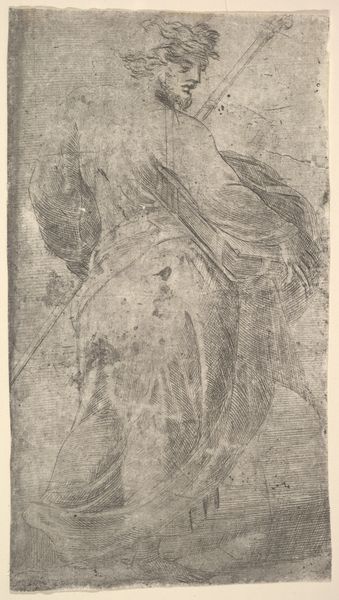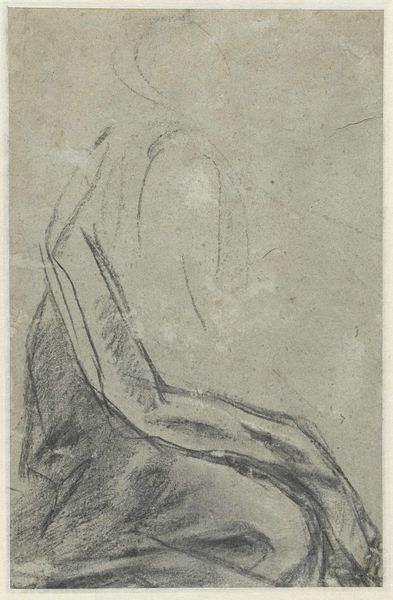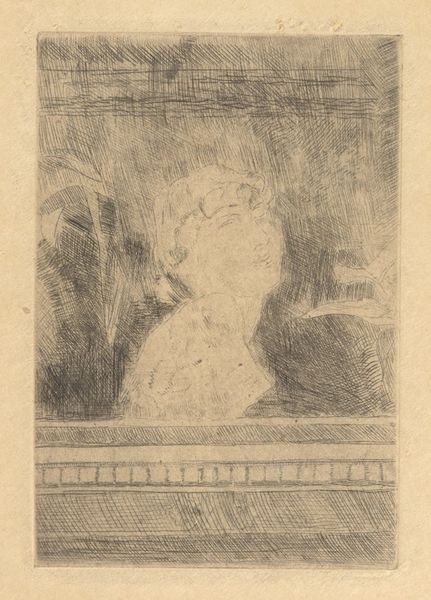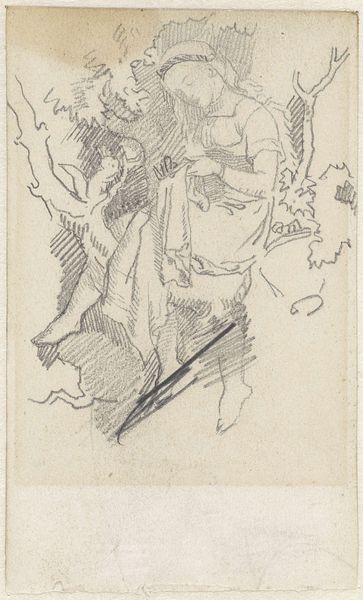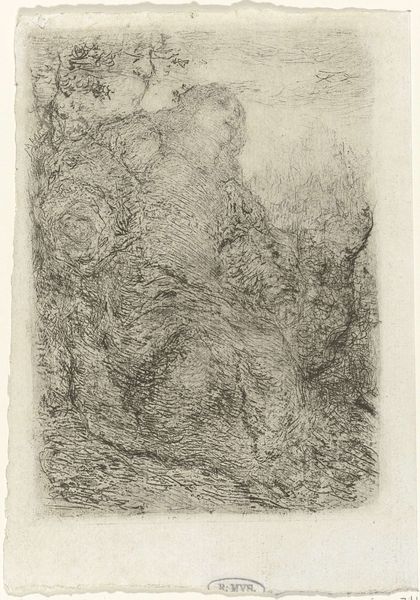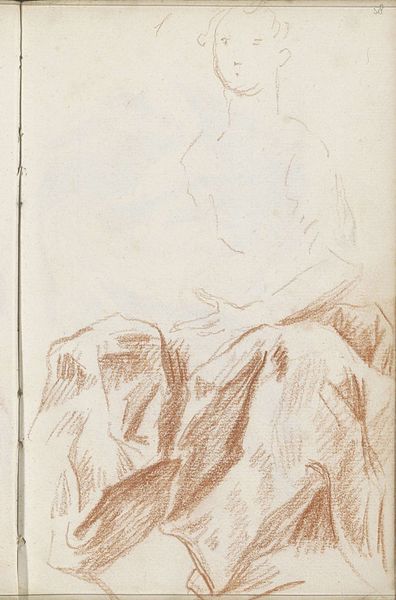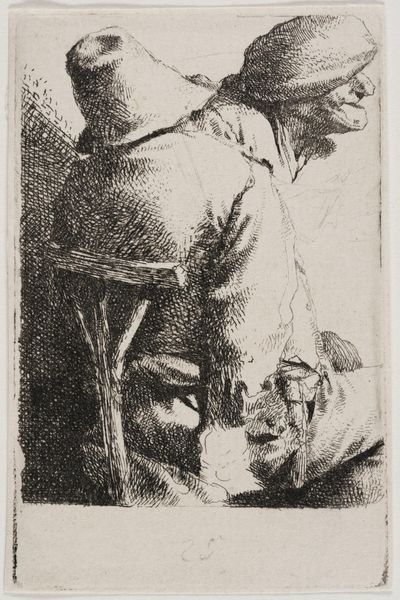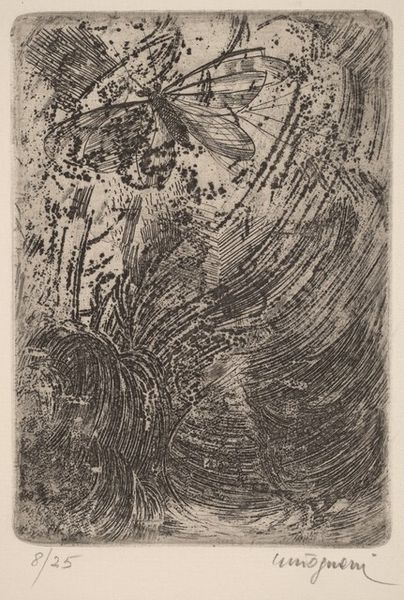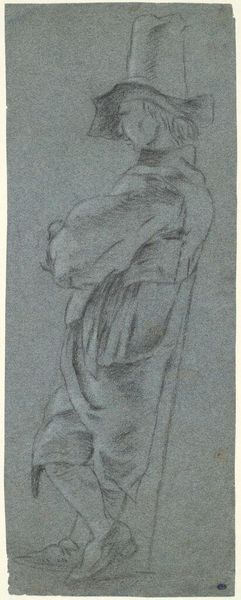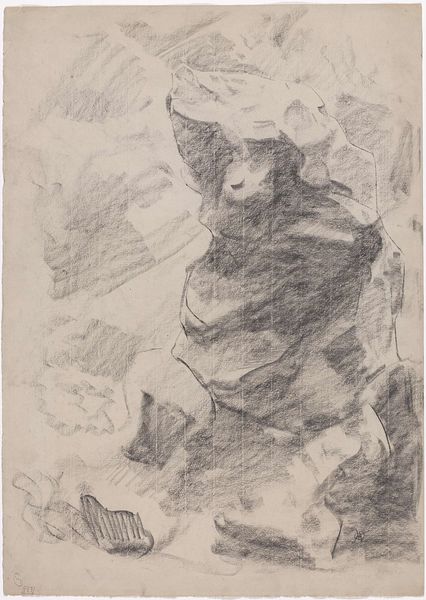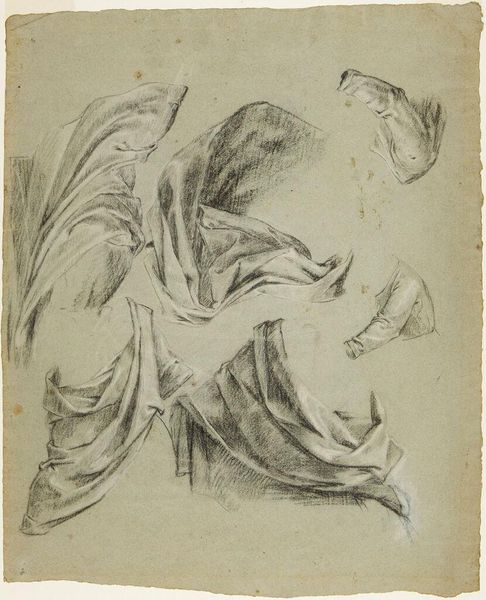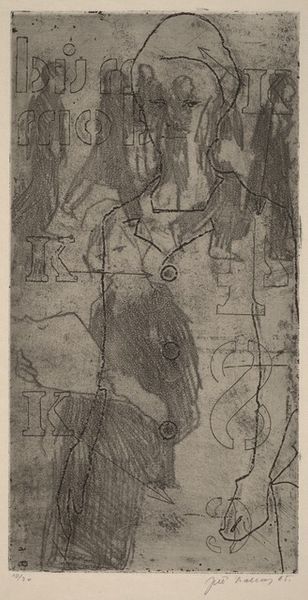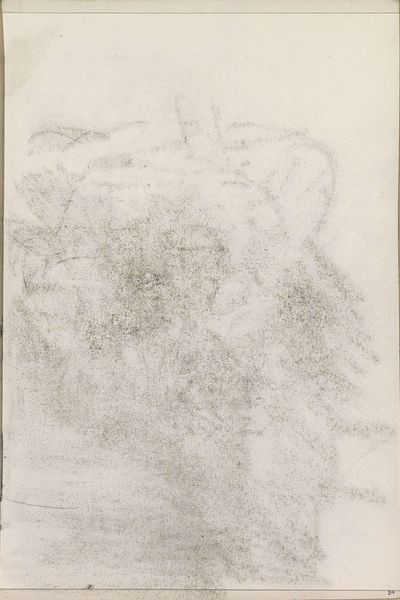
drawing, print, engraving
#
portrait
#
drawing
# print
#
line
#
engraving
Dimensions: height 109 mm, width 93 mm
Copyright: Rijks Museum: Open Domain
Pieter de Mare created this print of a crying child sometime before his death in 1796, using etching. With etching, the image is bitten into a metal plate using acid, allowing for the creation of fine, detailed lines. De Mare has used this process to great effect here; observe the complex web of marks that define the child's headscarf, and the flowing, cursive quality of the lines around the face. But what does the technique, and its skilled execution, tell us about the image? Etching was a reproductive medium, capable of producing multiple copies. In this instance, the artist may have been hoping to make an income, selling his work to a growing middle class with an appetite for sentimental imagery. The crying child is not only an aesthetic object but a commodity. Considering the work in this way invites us to reflect on the nature of art, labor and value in the late 18th century, at the dawn of the industrial revolution.
Comments
No comments
Be the first to comment and join the conversation on the ultimate creative platform.
